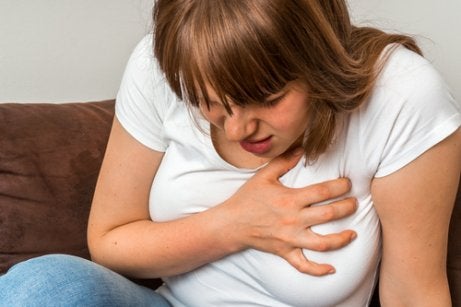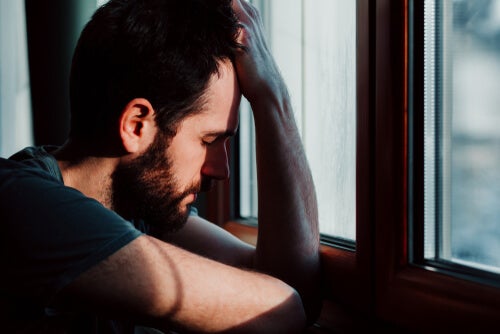The First Panic Attack and What Happens Next


Written and verified by the psychologist Valeria Sabater
What happens after the first panic attack opens a before and after in the life of any person. It’s a frightening experience that seems to come out of nowhere and manifests with a wide range of physical symptoms. It’s so painful that you’ll feel you’re about to die; that your heart will collapse at any moment.
Those who’ve never had a panic attack may have many biased ideas about this condition. Thus, it’s common to think it only affects weak, insecure people. Moreover, it’s also common to assume that attacks arise in very specific situations where one is highly anxious, such as an upcoming public performance or getting into an elevator or an airplane, etc.
Now, something everyone should understand about panic attacks is that they can arise at any time and without a specific trigger. Some people wake up in the middle of the night wrapped in a sense of alarming panic, firmly believing they’re about to have a heart attack. Others feel it for the first time while talking on the phone, having dinner with friends, or being at a grocery store.
There’s also another important side of it you must understand. Anyone can have a panic attack at any given time. Because, regardless of whether we believe it or not, these experiences have nothing to do with personality, age, or circumstances; only anxiety. This feeling is normal in human beings. Therefore, you should know what happens and what to do if/when you get your first panic attack.
“Our anxiety doesn’t come from thinking about the future, but from wanting to control it.”
-Kahlil Gibran-
What happens after the first panic attack?

There are many techniques and resources within your reach to deal with anxiety. However, there’s one thing that often fails to get to you: information. You don’t recognize the symptoms and signs that anxiety leaves in your body and in your mind. You don’t know the consequences and the way they’ll manifest when they get to be too much.
For those reasons, many people don’t really know what a first panic attack is like. Somehow, in your biased ideology, it’s something that only happens to others or experiences you’ve seen on TV. You’ve seen how easily they solve it by breathing in a paper bag. It’s, therefore, necessary to have more reliable information and a certain culture of psychological disorders to be able to intervene as soon as possible.
Let’s look at what happens after the first panic attack.
Going to the emergency room
When you have a panic attack for the first time, your fear grows exponentially because you don’t understand what’s happening. Thus, ignorance and uncertainty both trigger your anxiety. There’s tachycardia, shortness of breath, dizziness, muscle tension, etc. Thus, it’s common for people to go to the emergency room because they believe you’re having a heart attack.
You’d be even more baffled after receiving a doctor’s diagnosis. That is, they tell you that what you just had was in your mind. So, of course, you feel disturbed and in denial. This is because the experience you just had is so real and physical that most people won’t hesitate to ask for a second opinion and to have further tests and checkups. On average, a doctor will prescribe anxiolytics for a limited time.
The cycle of fear begins after the first panic attack

Panic attacks are the product of development, even though they begin to manifest abruptly. They’re the physical trigger of an adverse emotional state that’s maintained over time. Thus, and on average, those who experience them have accumulated a great burden of anxiety over many months, perhaps years.
What happens after the first panic attack is secondary anxiety. This is the state in which you’ll develop an intense fear of having a new attack again. The intense symptoms and loss of control terrify you. It all means that you’ll end up feeding that fear, which will lead to a vicious cycle that intensifies this proclivity even more.
Helplessness and the journey for help
Seeking help is another side of what happens after the first panic attack. There comes a time when you’re aware of your helplessness. Sooner or later you realize that you’re losing control of your life. So, the thought of experiencing a new one in an unexpected place and circumstance leads you to take the first step in dealing with it.
However, you may not always deal with it properly. For instance, some people do yoga because they think that relaxation and meditation techniques will help them reduce these attacks. However, such techniques don’t always work. In fact, they don’t because anxiety is a complex and elusive enemy that’s long attached to their life. Hence, these people need more specialized concrete strategies like the ones only a therapist can offer.
Psychological therapy is the only means to reduce panic attacks and the emotional reality behind them. Stay hopeful because you’ll regain control to shape a fuller and more satisfying life, gradually and with commitment.
All cited sources were thoroughly reviewed by our team to ensure their quality, reliability, currency, and validity. The bibliography of this article was considered reliable and of academic or scientific accuracy.
- Hood, H. K., & Antony, M. M. (2015). Panic Disorder. In International Encyclopedia of the Social & Behavioral Sciences: Second Edition (pp. 468–473). Elsevier Inc. https://doi.org/10.1016/B978-0-08-097086-8.27045-1
- Moitra, E., Dyck, I., Beard, C., Bjornsson, A. S., Sibrava, N. J., Weisberg, R. B., & Keller, M. B. (2011). Impact of stressful life events on the course of panic disorder in adults. Journal of Affective Disorders, 134(1–3), 373–376. https://doi.org/10.1016/j.jad.2011.05.029
This text is provided for informational purposes only and does not replace consultation with a professional. If in doubt, consult your specialist.








